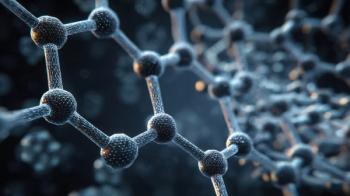
- The Application Notebook-03-01-2015
- Issue 0
Controlled Reduction of Disulphide Bonds in Protein Therapeutics Using On-line EC–MS
Antec introduced the ROXY as an electrochemical reactor up-front MS. The electrochemically-assisted reduction of disulphide bonds followed by on-line mass spectrometric (MS) detection is presented.
Summary
Antec introduced the ROXY as an electrochemical reactor up-front MS. The electrochemically-assisted reduction of disulphide bonds followed by on-line mass spectrometric (MS) detection is presented. The method is based on square-wave potential pulses applied on a new type of proprietary working electrode made from titanium alloy. The method does not use any chemical agents and is purely instrumental, resulting in a fully automated platform for fast assessment and characterization of S–S bonds in proteins and peptides.
Figure 1: A schematic of a disulphide bond reduction: Replacing interfering chemicals (for example, DTT, TCEP) by an electrochemical reactor cell used on-line with LC–MS.
Reduction Efficiency
An electrochemical reactor offers an advantage over chemical reactions. By changing the applied potential, the extent of disulphide bond cleavage is controlled. More negative potentials result in a shift of the charge state distribution, thereby indicating increased disulphide bond cleavage and unfolding of the protein.
Figure 2: Partial and full reduction of disulphide bonds in α-lactalbumin. The overlapping isotopic pattern of the +9 ion measured with the EC reactor cell turned OFF (top), and ON at E1 = -1000 mV and E1 = -1300 mV.
Conclusion
- The chemical free EC reduction shows further great potential for disulphide bond reduction of TCEP-resistant proteins and peptides prior to hydrogen/deuterium exchange monitored MS (HDX–MS) analysis.
- The applied potential can be used to control the degree of S–S reduction.
- Fast reduction of S–S bonds in only a few seconds.
- Reagent and enzyme free.
- Ideal for TCEP-resistant proteins.
- ROXY can be used for on-line EC–MS or LC–EC–MS.
For a complete application note please visit our website
Antec
Worldwide: Antec
USA: Antec USA
Articles in this issue
almost 11 years ago
Fast Analysis with SFCalmost 11 years ago
Structure-Molecular Weight Relationships of Synthetic Polymersalmost 11 years ago
Antibody Drug Conjugate (ADC) Analysis with SEC–MALSNewsletter
Join the global community of analytical scientists who trust LCGC for insights on the latest techniques, trends, and expert solutions in chromatography.





